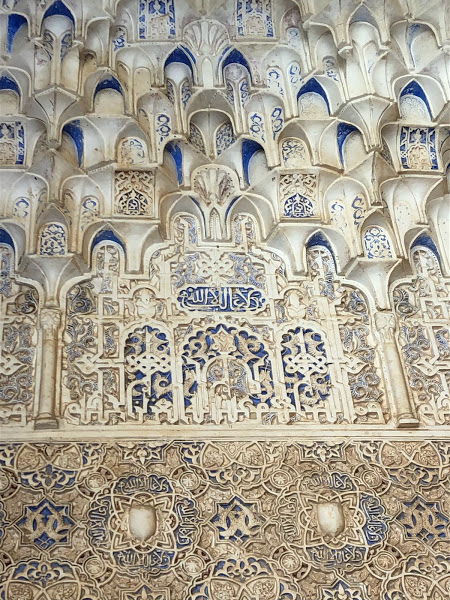10.6.22 Neighborhood, San Miguel and Granada Explore
- toddvandy
- Oct 6, 2022
- 3 min read
When you don't just walk down to the beach everyday there are lots of other cool things within blocks to explore, who knew?! A windy, hidden stairway of restaurants and shops complete with an ancient torre--many watchtowers were built along the southern coast of Spain between 1100-600 years ago by the Moors.


A long, loud band and flag procession for Saint Miguel. Other than a reason for parties and a 4 day weekend, we were unable to figure out the significance of this person (or angel?)



Flemenco music and dance was prolific during San Miguel.

Many nooks and alleys within and between buildings fill up with chairs, talbes, food, music and conversation every night after 8.
Going to Granada! on a semi-fast electric Spanish train.

The city is nearly "surrounded" by great walls and gates from about the 1400s

Granada is not a city in which you want a car.

Got several miles in, hiking up to and around the magnificient Alhambra.


Everyone else was doing it. Figured it best to blend in with the tourists.

Alhambra took over 100 years to build starting in the 1200s. Mostly inhabited by Sultans, royalty, politicians, it is a walled fortress palace compound. Akin to Versailles.

Ornate throughout. The Albaicin neighborhood across the valley.

The main palaces were very pretty and unique.



8 point stars hanging from the ceilings.


Albaicin, baby.
The Alhambra provided sweeping views of Granada and beyond.
Something very cool about the Alhambra was that running water was everywhere. And delicious. It wasn't just a fortress/palace on a hill, it was self-sustaining and was not uncommon to be 'under seige' for years or even decades.
Panoramic view from the high citadel of Alhambra. That is snow on those Sierra Nevada mountains in the distance to the right: a skiing destination in the winter.

This is a common street in the Albaicin

We were lucky to meet an acquaintance who showed us around. Thanks Sarah!

Stomp, clap, sing, pick, strum and wail. Lots of wailing. Flamenco music--with it's fascintaing roots among Gypsy Roma ancestors-- is a way of life here. Alhambra in the background.

Through the olives you can spot the ancient cave dwellings of the Sacromonte.


Dating back to at least the 1400s, the cave homes have a rich and storied past of treasure, freed slaves and Gypsies.
We learned a lot about Gypsies and their often tragic history in Spain. Traveling peoples with roots in ancient India, Roma peoples were first recorded as settling in Spain at least 600 years ago, they were referred to as the people from Egypt minor--which at the time meant the area where Turkey currently exists. It didn't take long for them to be categorized as eGyptians, leading to racist sanctions and slurs.

One of the birthplaces of Famenco, games of music and dance of children and families.

The ancient wall separates Albaicin from Sacromonte, where hundreds still live in permanent cave homes.

We were very impressed with the plethora of high quality drinking water all throughout

the city and neighborhoods.

walking through the river Valley looking up at the Alhambra, caught the boys with their babysitter for that evening. Thanks Stella :)

Granada's main cathedral.


The main chapel is not as large as Malaga's, but the building overall seemed larger

with mulitple chapels.

We couldn't stay long because of a service and a wedding. And we also saw the very cool chapel where Isabella and Ferdinand are buried. No pictures were allowed but the art and the relics and coffins were fascinating. Theirs is a whole nother story.
San Miguel was also happening in Granada! But we spent most of the evening watching Flamenco and tapas crawling with new friends. (tapas is free with drink here!)


See you another time, Granada. You were the quintessential, romantic Spain. No wonder so many expats enjoy living here.

On the train ride home, more olives as far as the eye can see. Spain is to olives as Iowa is to corn.



Comments